#Robert McKim
Explore tagged Tumblr posts
Text
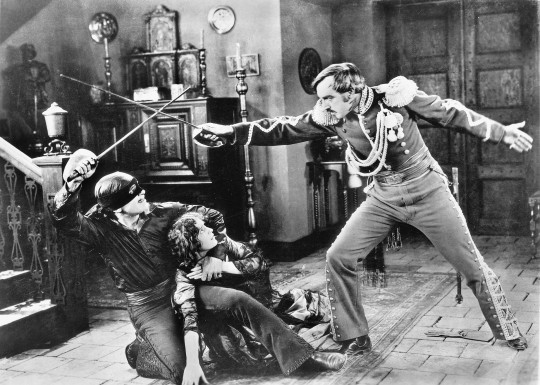
Douglas Fairbanks, Marguerite De La Motte, and Robert McKim in The Mark of Zorro (Fred Niblo, 1920)
Cast: Douglas Fairbanks, Noah Beery, Charles Hill Mailes, Claire McDowell, Marguerite De La Motte, Robert McKim, George Periolat, Walt Whitman, Sidney De Gray, Tote De Crow. Screenplay: Douglas Fairbanks, Eugene Miller, based on a magazine story by Johnston McCulley. Cinematography: William C. McGann, Harris Thorpe. Art direction: Edward M. Langley.
Film firsts are usually worth checking out, and The Mark of Zorro is a double first: It's the first appearance of the title character on screen, and it's the first of the genre of films for which Douglas Fairbanks remains best-known, the swashbuckler. Since Fairbanks and co-scenarist Eugene Miller adapted Johnston McCulley's 1919 magazine story, "The Curse of Capistrano," the masked hero has been played by Tyrone Power, Guy Williams (in the Disney TV series), Frank Langella, George Hamilton (in a spoof featuring Zorro's gay twin brother), Alain Delon, and (as the aging Zorro and his hand-picked successor) Anthony Hopkins and Antonio Banderas, and appeared in numerous Mexican and European films. The trope of the do-gooder who pretends to be a wimp but turns into a force for justice has its precursor in the Baroness Orczy's play and novel The Scarlet Pimpernel and lives on in countless superhero tales, most notably the Clark Kent/Superman story. As the languid fop Don Diego Vega, Fairbanks affects a weary slouch and spends his time doing tricks that involve a handkerchief. When he turns into Zorro, with mask and scarf over his head, he pastes on a little mustache oddly reminiscent of Boris Badenov, and succeeds in taking on the villains with great élan. The film itself begins slowly, with too much exposition crammed into the intertitles, but eventually Fairbanks gets his act together, and the climax of the movie is a hilarious showpiece for his acrobatic moves. He leads the Capistrano constabulary on a merry chase over walls and across rooftops, inevitably tempting them into disaster: He leaps over a pigsty, for example, whereupon the pursuers fall into it. At the end, revealing his secret identity, he wins the hand of Lolita Pulido (Marguerite De La Motte), by saving her family's estate from the clutches of the evil governor (George Periolat) and his henchmen, Capitán Juan Ramon (Robert McKim) and Sgt. Pedro Gonzales (Noah Beery), both of whom get branded with the emblematic Z (though the sergeant gets his only in the seat of his pants). Good fun, once it gets going.
24 notes
·
View notes
Text
7 aprile … ricordiamo …
7 aprile … ricordiamo … #semprevivineiricordi #nomidaricordare #personaggiimportanti #perfettamentechic
2021: Dilip Kumar, pseudonimo di Mohammed Yusuf Khan, attore indiano. Si sposò con Saira Banu nel 1966. (n. 1922) 2021: James Hampton, James Wade Hampton, attore statunitense. Sposò l’attrice Mary Deese. (n. 1936) 2021: Robert Downey Sr., nato Robert John Elias, attore, sceneggiatore e regista statunitense. Padre di Robert Downey Jr. Figlio di Elizabeth McLauchlen, modella e Robert Elias Sr.,…

View On WordPress
#7 aprile#Allen Garfield#Allen Goorwitz#Betty Blythe#Brenda Ann Benet#Brenda Benet#Dilip Kumar#Elizabeth Blythe Slaughter#Geoffrey Bond Lewis#Geoffrey Lewis#Gordon Parks#Gordon Roger Alexander Buchannan Parks#Henry Ford#James Hampton#James Wade Hampton#John Agar#Lillian McKim Rousseau#Lillian Pulitzer Rousseau#Lilly Pulitzer#Maria Michi#Marilyn Miller#Marilynn Miller#Mary Ellen Reynolds#Maurice Rentner#Maurice Rentner Limited#Nick Stuart#Ricordiamo#Robert Downey Sr.#Robert John Elias#Seymour Cassel
0 notes
Text

'robert north + ross mckim in richard alston's "tiger balm," 1972' in london contemporary dance theatre: the first 21 years - mary clarke + clement crisp (1989)
34 notes
·
View notes
Text
Movies/TV Watched 2024
Asteroid City (Wes Anderson, 2023)
Nomadland (Chloé Zhao, 2020)
Cordelia (Adrian Shergold, 2019)
The Piano (Jane Campion, 1993)*
Malcolm X (Spike Lee, 1992)*
Avatar (James Cameron, 2009)
Child’s Play (Tom Holland, 1988)*
Train (Gideon Raff, 2008)
Silent Hill (Christophe Gans, 2006)
Nam June Paik: Moon Is the Oldest TV (PBS American Masters) (Amanda Kim, 2023)
Past Lives (Celine Song, 2023)
Basic Instinct [Director’s Cut] (Paul Verhoeven, 1992)*
In Cold Blood (Richard Brooks, 1967)
What Lies Beneath (Robert Zemeckis, 2000)
Fellini Satyricon (Federico Fellini, 1969)
Significant Other (Dan Berk, Robert Olsen; 2022)
The Mimic (Huh Jung, 2017)
Extinction (Miguel Ángel Vivas, 2015)
The Visit (M. Night Shyamalan, 2015)
The Hole in the Ground (Lee Cronin, 2019)
Batman (Tim Burton, 1989)
Cronos (Guillermo del Toro, 1993)
Under the Skin (Jonathan Glazer, 2013)
Our Flag Means Death [szn 2] (2023)
Wes Craven Presents: They (Robert Harmon, 2002)
Carnival of Souls (Herk Harvey, 1962)
Leviathan (George P. Cosmatos, 1989)
Rick and Morty [szn 5] (2021)
Dark Skies (Scott Stewart, 2013)
Insidious: Chapter 2 (James Wan, 2013)*?
Insidious: Chapter 3 (Leigh Whannell, 2015)
Insidious: The Last Key (Adam Robitel, 2018)
Insidious: The Red Door (Patrick Wilson, 2023)
American Graffiti (George Lucas, 1973)*?
The Pope’s Exorcist (Julius Avery, 2023)
Independence Day (Roland Emmerich, 1996)*
Men in Black (Barry Sonnenfeld, 1997)*
The Exorcist (William Friedkin, 1973)*
Poor Things (Yorgos Lanthimos, 2023)
Angels & Insects (Philip Haas, 1995)*?
Tucker & Dale vs. Evil (Eli Craig, 2010)
The Purge (James DeMonaco, 2013)
4/20 Massacre (Dylan Reynolds, 2018)
The Fast and the Furious (Rob Cohen, 2001)
Poisoned Ground: The Tragedy at Love Canal (PBS American Experience) (Jamila Ephron, 2024)
Beetlejuice (Tim Burton, 1988)*
The Signal (William Eubank, 2014)
Beetlejuice Beetlejuice (Tim Burton, 2024)
The SpongeBob SquarePants Movie (Stephen Hillenburg, Mark Osborne; 2004)
Felix the Cat: The Movie (Tibor Hernádi, 1988)
Speak No Evil (James Watkins, 2024)
Kwaidan (Masaki Kobayashi, 1964)*?
The Portrait of a Lady (Jane Campion, 1996)
Sisters with Transistors (Lisa Rovner, 2020)
Holy Smoke! (Jane Campion, 1999)
Shock Treatment (Jim Sharman, 1981)*
Space: The Longest Goodbye (Ido Mizrahy, 2023)
House of Wax (Jaume Collet-Serra, 2005)
The Lion, the Witch and the Wardrobe (Bill Melendez, 1979)*
Wojnarowicz: F**k You F*ggot F**ker (Chris McKim, 2020)
Longlegs (Osgood Perkins, 2024)
O Brother, Where Art Thou? (Joel Coen, 2000)*
Tess (Roman Polanski, 1979)
Barbarian (Zach Cregger, 2022)
Home Alone (Chris Columbus, 1990)*
Jennifer’s Body (Karyn Kusama, 2009)
Rick and Morty [szn 6] (2022)
The Seeding (Barnaby Clay, 2024)
Edward Scissorhands (Tim Burton, 1990)*
Beatles ’64 (David Tedeschi, 2024)
Fanatical: The Catfishing of Tegan and Sara (Erin Lee Carr, 2024)
Raggedy Ann & Andy: A Musical Adventure (Richard Williams, 1977)*
Rick and Morty [szn 7] (2023)
Five Nights at Freddy’s (Emma Tammi, 2023)
Immaculate (Michael Mohan, 2024)
Freaknik: The Wildest Party Never Told (P. Frank Williams, 2024)
The Booksellers (D. W. Young, 2019)*
His House (Remi Weekes, 2020)
Time Cut (Hannah MacPherson, 2024)
Don’t Move (Adam Schindler, Brian Netto; 2024)
Carry-On (Jaume Collet-Serra, 2024)
Subservience (S. K. Dale, 2024)
The Muppet Christmas Carol (Brian Henson, 1992)*
May December (Todd Haynes, 2023)
Horse Girl (Jeff Baena, 2020)
Psycho (Alfred Hitchcock, 1960)*
Movies/TV watched 2024; asterisks * are rewatches, asterisks w/question marks *? are rewatches I couldn’t remember having seen before but had a vague sense of familiarity and/or I found evidence of watching elsewhere in my archive. Struck titles were unfinished (I absolutely loved the book In Cold Blood but dozed off a bunch during the movie; Under the Skin seemed promising but I had to turn it off because I could NOT emotionally deal with the baby on the beach.)
This year I treated myself to some old weird nostalgia movies on VHS (YouTube or Internet Archive links provided when available). We have a decent collection of thrifted DVDs and we borrow a lot of movies from the library. Occasionally I’ll sign up for a month of a streaming service if there’s something ~exclusive~ we want to watch, and then we’ll end up watching whatever horror garbage is offered. Honestly, I think “meh, it was okay” was my main reaction to a lot of the movies I watched this year? Kind of a bummer.
Favorites in 2024: BEETLEJUICE BEETLEJUICE!!!!! I just loved everything about it :D I thought it was aesthetically the right amount of Tim Burton without being *too much* Tim Burton, ya know? (Love movie environments that feel like a dark ride!) Beetlejuice is a forever favorite, one of my earliest “crushes” (proving that I have absolutely never had good taste in men & that as early as age 4 I yearned for a witty dirtbag prankster to show up and “promptly whisk [me] off from [my] ordinary life into wacky adventures in the land of the dead” [description from the box set of the animated series, yikes lmao; my other fave beginning around this time was Doctor Who lol, obvious underlying theme is obvious]). ANYway, BJ BJ was also the first movie we saw in theatres post-covid! Not necessarily due to covid-related concerns, but just like, idk, being busy and frugal homebodies. And I guess since more theatres are offering restaurant food nowadays, they’re making it more difficult to sneak food in (no bags allowed), booooo.
Other faves: Asteroid City (I’m not usually a Wes Anderson person but this was visually stunning), His House, Poor Things. The Seeding was pretty wild, if heavy-handed. Tho I kind of thought *everything* about male/female relationships in horror movies I saw this year was getting pretty heavy-handed :/ Sisters with Transistors was a cool documentary about women (Delia Derbyshire, Daphne Oram, Wendy Carlos, Pauline Oliveros, et al.) in the early days of electronic music, dreamily narrated by Laurie Anderson (*heart-eyes*). Beatles ’64 was surprisingly okay! I *really* appreciated the interviews with people who were young Beatlemaniacs back in the ‘60s, hearing (mostly) women talk about how the Beatles represented a new way of being masculine, how liking the Beatles could provide a sense of agency for women navigating their own desires, etc. That was a cool perspective which I do not personally encounter very often in the Beatles cinematic universe. (For background: My two most recent long-term relationships have been with indie musicians who just happen to be extremely obsessed with the Beatles, so I’ve spent the past 17+ years absorbing deep dives about how great they are, and while I like many of their songs and Understand Their Position of Importance in the History of Pop/Rock/Human Culture, I just do not give a fuuuck on a personal level. But I do still begrudgingly respect my partner’s interest enough to occasionally watch a Beatles documentary with him.)
5 notes
·
View notes
Photo


Films Watched in 2020:
90. The Mark of Zorro (1920) - Dir. Fred Niblo
#The Mark of Zorro#Fred Niblo#Douglas Fairbanks#Noah Beery#Charles Hill Mailes#Claire McDowell#Marguerite de La Motte#Robert McKim#George Periolat#Zorro#Silent Cinema#Films Watched in 2020#My Edits#My Post
7 notes
·
View notes
Photo

18 notes
·
View notes
Text
Wagon Tracks (1919) A Silent Film Review
Wagon Tracks (1919) A Silent Film Review
William S. Hart is a Santa Fe Trail guide whose brother is murdered by a riverboat gambler. And guess who has joined the wagon train Hart is directing to Santa Fe? Less action and more drama in this Hart vehicle with veteran baddie Robert McKim providing the mustache twirls. (more…)
View On WordPress
3 notes
·
View notes
Photo
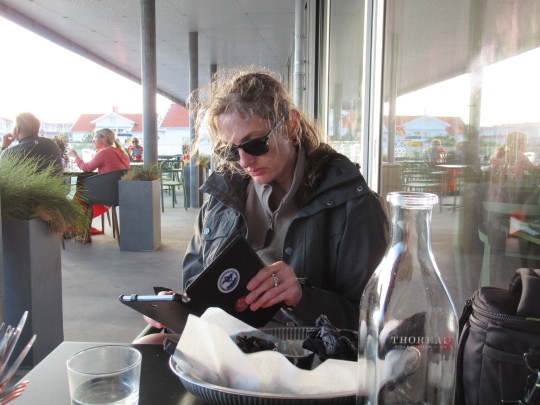
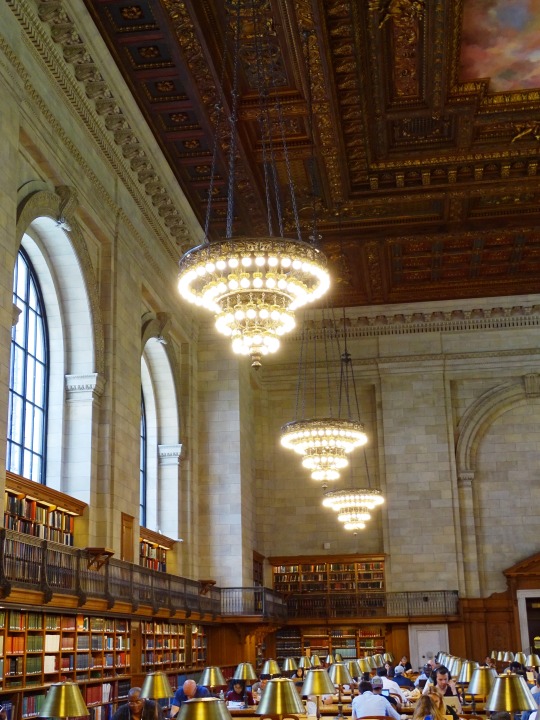
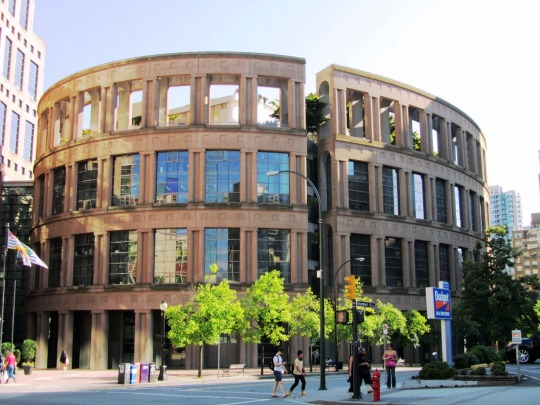



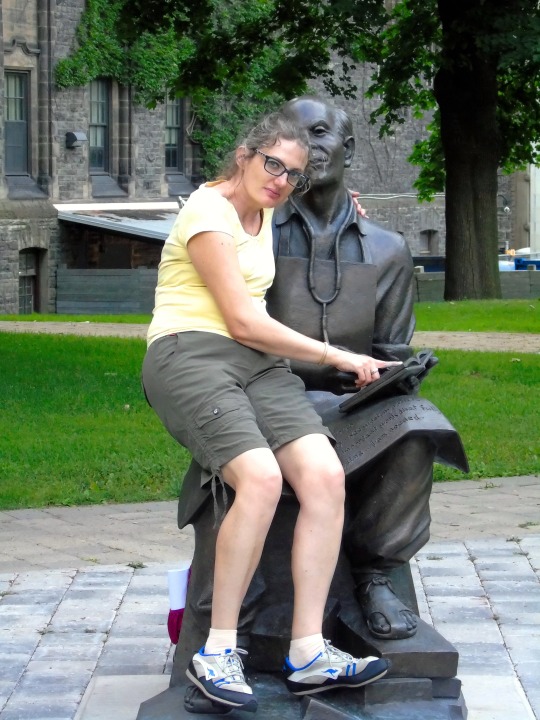

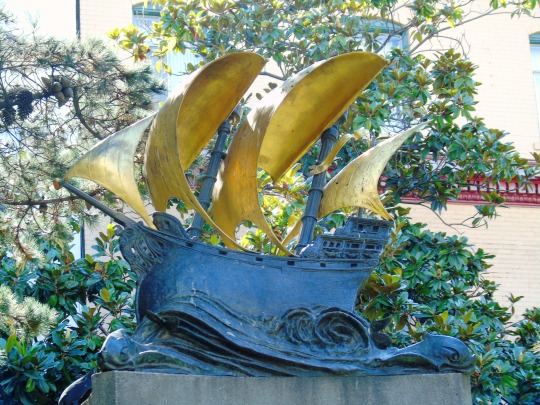

National Read a Book Day
National Read a Book Day has recognized annually on September 6th. While these bookish days may seem similar, National Read a Book Day invites us all to grab a book we might enjoy and spend the day reading. Don’t keep it to yourself. Share the experience! Read aloud either to children or grandparents. Read to your pets or your stuffed animals and plants. Reading improves memory and concentration as well as reduces stress. Older adults who spend time reading show a slower cognitive decline and tend to participate in more mentally stimulating activities over their lifetime. Books are an inexpensive entertainment, education and time machine, too.
“Any time women come together with a collective intention, it’s a powerful thing. Whether it’s sitting down making a quilt, in a kitchen preparing a meal, in a club reading the same book, or around the table playing cards, or planning a birthday party, when women come together with a collective intention, magic happens.” – Phylicia Rashad
Although the day was apparently thought of with print books in mind, e-books are equally suitable for celebrating National Read a Book Day. The primary goal is to encourage reading, as both fiction and non-fiction books open up vast unknown vistas to enquiring minds. Taking the opportunity to enjoy some time out of the day to relax and read is good for the soul and the mind.
History of National Read a Book Day
The first ceremony of National Read a Book Day was around the end of the first decade of the 2000’s and was almost certainly the idea of a librarian, probably one who was supporting youngsters to read a book. On National Read a Book Day, it’s not mandatory to read a whole book but the day serves as an inspiration to people to read a section of a book they particularly enjoyed, to read with children, to donate a book to a children’s school library, or to host a book reading party.
How to Celebrate National Read a Book Day
Whether you are a fan of fiction, non-fiction, science fiction, history, medical literature, little stories or any of the hundreds of genre of literature out there, here are some ways you can celebrate National Read a Book Day, Read that book you have always been expecting to pick up and read. Revisit your desired book and read it again. Combine a local book club so that you have more motivation to learn. If you are previously a part of a book club, what about creating a book party for them? Invite all the book club members and consider a book while enjoying dishes inspired by your favorite books. Learn more about the life and work of your beloved author. Visit your local library, and if you are not already a member, become one. Support your local library or any reading initiatives that exist in your neighborhood by volunteering your time, money or expertise.
Source
#Norman Bethune by David Pellettier#Rose Main Reading Room#6 September#Stephen A. Schwarzman Building#New York Public Library#Toronto#Sweden#USA#Canada#Marstrand#Cincinnati#National Read a Book Day#Gettysburg#President Abraham Lincoln by Stanley J. Watts#architecture#cityscape#Adams County Library System#San Francisco#Robert Louis Stevenson Memorial by Bruce Porter#Boston Public Library McKim Building#Vancouver Public Library#John Steinbeck#Cannery Row Monument by Steven Whyte#Monterey
1 note
·
View note
Photo

The Avery Architectural and Fine Arts Library is a library located in Avery Hall on the Morningside Heights campus of Columbia University in the New York City. It is the largest architecture library in the world. Serving Columbia's Graduate School of Architecture, Planning and Preservation and the Department of Art History and Archaeology, Avery Library collects books and periodicals in architecture, historic preservation, art history, painting, sculpting, graphic arts, decorative arts, city planning, real estate, and archaeology, as well as archival materials primarily documenting 19th- and 20th-century American architects and architecture. The architectural, fine arts, and archival collections are non-circulating. The Ware Collection, mainly books on urban planning and real estate development, does circulate. Avery Library is named for New York architect Henry Ogden Avery, a friend of William Robert Ware, who was the first professor of architecture at Columbia University in 1881. Soon after Avery's death in 1890, his parents, Samuel Putnam Avery and Mary Ogden Avery, established the library as a memorial to their son. They offered his collection of 2,000 books, mostly in architecture, archaeology, and the decorative arts, many of his original drawings, as well as funds to round out the book collection and to create an endowment. The Library now holds more than 400,000 volumes and receives approximately 900 periodicals, with legacy holdings of approximately 1,900 serial titles. The library's historic first-level reading room is a significant example of work by the New York architectural firm McKim, Mead, and White. The library building itself, also designed by McKim, Mead, and White, celebrated its 100th anniversary in 2012. #visualart #iava #iavaart #iavaarts #iavaartsorg https://www.instagram.com/p/CbMxV_8OclT/?utm_medium=tumblr
2 notes
·
View notes
Text
CMP Travel Program and Section of Invertebrate Paleontology Promotes the 125th Anniversary of the Carnegie Library of Pittsburgh with an outdoor walking tour
Before Carnegie Museums of Pittsburgh (CMP) reopened to the public on June 28th, Barbara Tucker, Director of CMP’s Travel Program, talked with me about ways to reengage members and bring them back to the Oakland museums.
With knowledge about my research on the 125th Anniversary of the founding of the Carnegie Library, Barbara suggested a 90-minute outdoor walking tour around the exterior of the massive building. Starting from where the oldest portion of the building (Portal Entry) meets the newest (Museum of Art) to the front of the historic library entrance, past the Diplodocus carnegii statue, to Forbes Avenue and the entrances of the music hall, natural history museum, and fine arts museum guarded by the statues of the noble quartet.

Fig. 1
The tour was advertised on the CMP website under the Travel Program link, https://carnegiemuseums.org/things-to-do/travel-with-us/ and https://carnegiemuseums.org/kollar/, and accurately described as an activity fully compliant with CDC protocols. Within a week, the tour received overwhelming signups, which were organized by date and number of participants by Travel Program assistant Isabel Romanowski. Three tour dates were set in August and several more in September. Special private tours for donors and others in the fall continue to be arranged.
Andrew Carnegie, Founder:
As guide for an exercise that involves close observation of architectural details, I face the challenge of getting participants to imagine this section of Pittsburgh long before any of the structures around in Oakland existed. The library and museums cover five acres of flat bottom land formed by the pre-Ice Age Monongahela River more than 1.2 million years ago. In far more recent times, the land was part of the Mary Schenley Mount Airy tract of 300 acres which was donated to the City of Pittsburgh in 1889 to create Schenley Park in her honor. Andrew Carnegie, (1835 – 1919) industrialist, steel magnate, and philanthropist, in 1895 saw the site as a place to build a complex with a library, fine arts gallery, science museum, and music hall that would represent the noble quartet of literature, art, science, and music.
The Library Tour Themes:

Fig. 2
Tour groups assemble on the dark stone steps outside the Carnegie Museum of Art (CMOA) rear entrance for an introduction focusing on the two connected, but architecturally different buildings: the Beaux-Arts style Carnegie Complex, with the original structure dating to1895, and later addition to 1907, which was built by Longfellow, Alden, and Harlow using Carnegie Steel (Fig. 2), and the modern Carnegie Museum of Art, built by architect Edward Larrabee Barnes in 1974.
Two rock types distinguish the building exteriors. The older portions of the building are clad in a light grey, easily carved, 370 million-year-old Berea Sandstone from Amherst, Ohio, while the exterior and much of the interior of Museum of Art is covered in the 295 million-year-old bluish iridescence Larvikite igneous rock from Larvik, Norway. When Barnes was commissioned to build CMOA, he chose the dark rock to blend with the older building’s coal dust veneer, a grime coating that was removed when the exterior stone was cleaned in 1990.
Landscape Art and Geology:
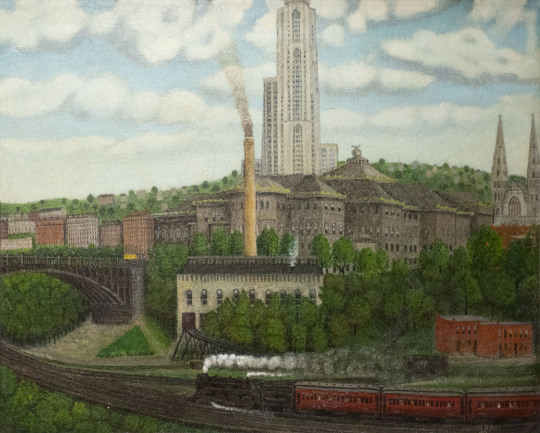
Fig. 3
Pittsburgh’s landscape painter, John Kane’s (1860 – 1934), Cathedral of Learning, circa 1930 (Fig. 3), depicts the 150-foot-deep Junction Hollow with its operating railroad. The work also includes many important architectural references, the Schenley Park Bridge (1897), Carnegie Institute’s Bellefield Boiler Plant (designed by Alden and Harlow in 1907 to supply electricity and heat to adjacent buildings), the Carnegie Institute Extension (1907), and a then unfinished Cathedral of Learning. This painting is part of CMOA Fine Arts collections.
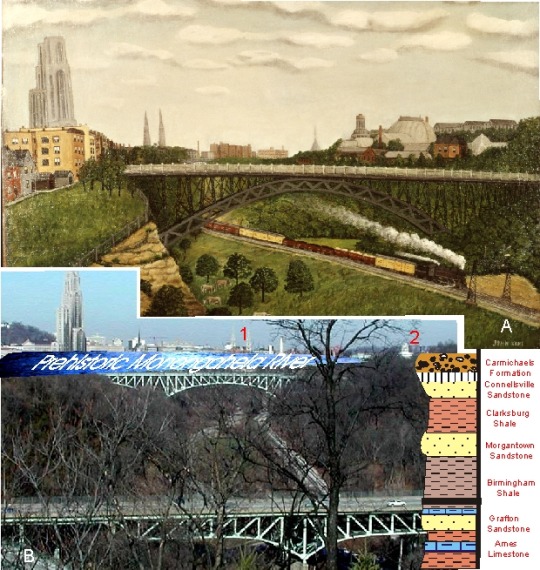
Fig. 4
Another John Kane landscape, Panther Hollow, circa 1930 – 1934, (Fig. 4A) in combination with Cathedral of Learning has been used in teaching about the 300 million-year-old geology of Schenley Park (Fig. 4B2) and the pre-Pleistocene Monongahela River that formed the flat bottom landscape of Oakland, and through erosion, Junction Hollow (Fig. 4B1). Kollar and Brezinski 2010, Geology, Landscape, and John Kane’s Landscape Paintings.
Junction Hollow Landscape:
Kane’s Cathedral of Learning (1930) is an idealized green space of Junction Hollow, the Wilmot Street Bridge in the foreground (1907) now replaced with the Charles Anderson Bridge (1940), and Carnegie Tech’s (now Carnegie Mellon University’s) Hamerschlag Hall or Machinery Hall (1912), built by Henry Hornbostel, a Pittsburgh architect. Hornbostel designed a circular Roman temple wrapped about a tall yellow brick smokestack (Fig. 4A). The design is based on the Roman temple of Vesta in Tivoli, Italy, dating to the early 1st century BC. Hornbostel’s overall campus design focused on connection between art and science, with Junction Hollow representing the geological sciences. The architect Philip Johnston, who built Pittsburgh’s postmodern PPG Place (circa 1984), once contrasted the Bellefield Boiler Plant smokestack as “the ugliest in the world to Machinery Hall’s smokestack as the most beautiful.” In novelist Michael Chabon’s debut novel, The Mysteries of Pittsburgh, (1988) the Bellefield Boiler Plant, termed “the cloud factory” by the narrator, is the setting for a pivotal scene.
Carnegie Library of Pittsburgh (Main):
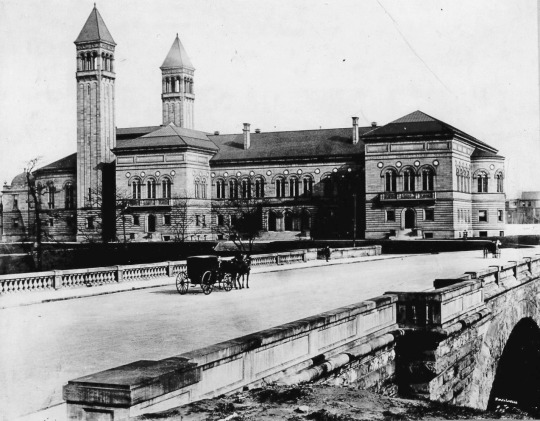
Fig. 5
The separate institutions we now know as Carnegie Museum of Natural History and Carnegie Museum of Art can track their origins to exhibits and galleries within space now fully occupied by Carnegie Library of Pittsburgh. An image of the Carnegie Library of Pittsburgh in 1902 from the Bellefield Bridge, a structure now buried under the Mary Schenley Memorial Fountain (1918), reveals eclecticism in architectural features (Fig. 5). The west facing frontage doorways and portico of the library features, CARNEGIE LIBRARY, FREE TO THE PEOPLE, and 24 carved writer names. Missing from the names is Carnegie’s favorite poet, Robert Burns, whose statue was dedicated in 1914 on the grounds of Phipps Conservancy. Three separate entrances are served by granite steps of Permian age from Vermont, one for the science museum, one for the Department of Fine Arts, and the third, with distinctive Romanesque round doorways, brass doors with intricate features, and keystone scrolling, for the Library. This entrance was designed by Harlow, who was the draftsman on the McKim, Mead, and White team responsible for the Beaux-Arts Boston Public Library (1895). When the Carnegie Institute Extension was constructed in 1907, the science museum and fine arts museum collections were moved into the new space. The former spaces in the library became the Children’s Room, Pennsylvania Room, and Music Library.

Fig. 6

Fig. 7
A challenge at this point in the tour involves discussing features that are not visible up close. The Longfellow, Alden, and Harlow’s Italian Renaissance and Beaux-Arts H-shaped parallelogram winning design featured a copula (Fig. 6) on top of the red tile roof that was never built. Eclecticism features include a double apse, a smaller shaped semi-circular extension of the library’s wall on the southside of the building, and larger apse on the north or Forbes Avenue side of the building, with the semicircular Music Hall auditorium, designed by Longfellow. The music hall exterior was structurally changed by the 1907 construction (Fig. 7).
The exterior Berea Sandstone reveals rustication masonry techniques with the cut blocks on the exterior first floor level distinguished by ashlar pillow horizontal border stone, and smooth masonry from the second floor to the cornice below the roof line. The second floor late Gothic style windows are divided by a vertical element called a mullion that helps with rigid support of the window arch and divides the window panels. Two symmetrical Campanile towers that Carnegie called “those donkey ears” were modeled after the San Marco Bell Tower in Venice, Italy. The towers served as an architectural offset to the semicircular exterior walls of the music auditorium and were removed in 1902 for the construction of the Carnegie Institute Extension. The installation of the towers can be interpreted as a tribute to Henry Hobson Richardson’s Allegheny County Courthouse twin towers (1888).
Architects choice of light grey sandstone and red tile roof:
The library’s red tile roof incorporated multiple glass roofs over the library, fine arts galleries, and science museum (all shaded from exterior sunlight today) which typified the Beau-Arts style. Keep in mind, the library did not have electric light. Light was provided by gas lighting and natural sunlight. Longfellow, Alden, and Harlow wrote that “the choice of a red tile roof and grey Ohio (Berea) Sandstone was intentional to contrast with Pittsburgh’s grey skies and the changing seasonal colors of the foliage in Schenley Park.”
The Beaux-Arts Architecture of the Carnegie Institute Extension 1907:
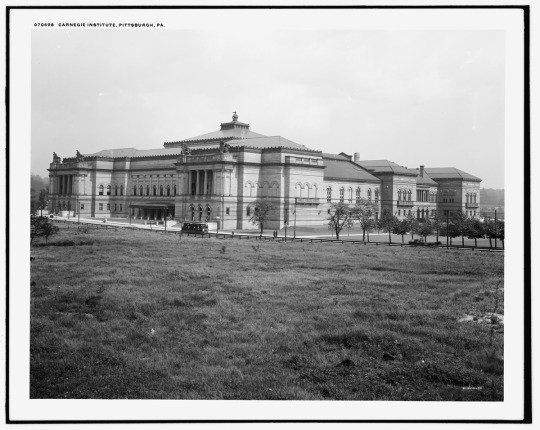
Fig. 8
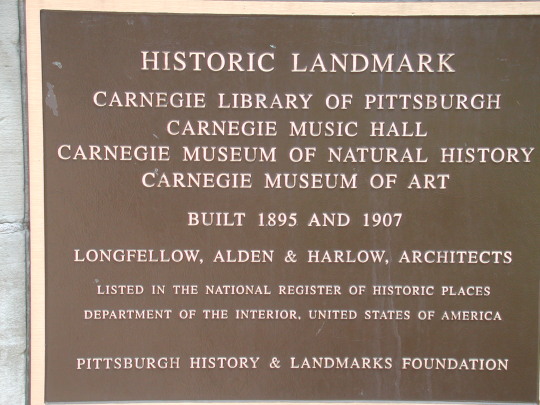
Fig. 9
After Longfellow returned to his Boston practice in 1896, Alden and Harlow received the commission to build the Carnegie Institute Extension (1907) (Fig. 8). Their efforts created one of the great Beaux-Arts building in the United States. As Cynthia Field, Smithsonian Architecture Historian, stated in 1985, “the building itself is the greatest object of the entire museum collection.” Formal recognition of the building’s architectural importance exists in two historic landmark plagues placed outside of the Carnegie Library entrance and the Museums’ Carriage Drive entrance (Fig. 9).
New exterior features of the 1907 extension work included the replacement of the red tile roof with copper, the addition of an armillary sphere, the construction, with a colonnade of solid Corinthian fluted columns of Berea Sandstone, four portico porches over the main entrances to the library, music hall, natural history and art museum, and eastside of building (now removed), and the creation, along Forbes Avenue, of a main Carriage Drive entrance with direct access to the galleries. The carved names of authors, artists, musicians, and scientists in the buildings’ entablature, a Victorian era practice, extends around the building from the library’s southeast corner to the music hall entrance, and natural history and the fine arts entrances.
Also notable along Forbes Avenue are John Massey Rhind’s noble quartet statues that guard the Music Hall and Natural History and Art entrances. The four male figures all seated in classic Greek chairs are Michelangelo (art), Shakespeare (literature), Bach (music), and Galileo (science). Standing three stories above the quartet on the edge of the roof, four groups of female allegorical figures represent literature, music, art, and science as well. The bronze figures were casted in Naples, Italy in 1907 (Fig 8).
Inside the 1907 Architecture and Building Stones:
The architects created 13 new interior spaces where three grand spaces stand out for specific architecture styles such as, the Beaux-Arts Grand Staircase (voted in 2018 as the 8th best museum staircase in the world), the Neoclassical Hall of Sculpture, and neo-Baroque Music Hall Foyer. The extension used 32 varieties of marbles and fossil limestones, many from antiquity, quarried and imported from Algeria, Croatia, France, Greece, Ireland, Italy, and the United States.
Since 2004, the collaboration between the CMP Travel Program and the Section of Invertebrate Paleontology has been highly successful reaching out to our members and patrons. This summer’s tours generated some particularly appreciative comments:
The Carnegie's resident scientists are a defining characteristic of this noble institution. Might be an anachronism in an era when museums are focused on providing 'destination' entertainment and hosting special events for swells, but while treasures like Dr. Kollar are still on staff, it’s a splendid idea to facilitate interaction between them and museum visitors. Congratulations on a most enjoyable program. -Ron Sommer
Albert was very informative and interesting. I found it most valuable learning the history of the area. -Janet Seifert
I can't stress enough how unusual and interesting it was to have a geologist give us the tour. It had never occurred to me before that there's so much one can learn about building materials from a geologist. -Neepa Majumdar
Albert D. Kollar is Collection Manager and Carnegie’s Historian of the Carnegie’s Building Stones. Barbara Tucker is Director of Carnegie Travel Program.
14 notes
·
View notes
Photo










20 Historic, Beautiful New York Buildings That Were Demolished
City Hall Newspaper Row Buildings (l-r) World Building (aka Pulitzer Building), Sun Building, Tribune Building - all demolished. New York Times and Potter Buildings are still extant
City Hall Newspaper Row Buildings (l-r) World Building (aka Pulitzer Building), Sun Building, Tribune Building – all demolished. New York Times and Potter Buildings are still extant
New York City real estate developers will always knock down a building if a buck can be made. So it really should come as no surprise that these buildings were demolished because they outlived their usefulness or more often than not, the land they sat upon was deemed more valuable than the building itself.
Nathan Silver’s must-own book, Lost New York (1967) Houghton Mifflin, was the first book to explicitly point out what New York City had lost architecturally over the years. If you have never read it, you should.
For our short postcard essay, there are hundreds of examples we could have chosen from and we picked 20. We omitted places of worship, theatres and restaurants which are the most transitory of buildings.
We’ve covered hotels before, and we could do another story on all the historic hotels that have been torn down, but we’ve included a few in this retrospective.
Rather than comment extensively on the buildings, a brief summary will suffice and the images should convey what we have lost. These postcards have been scanned at 1200 dpi in high resolution, click on any postcard to enlarge.
Singer Building hresSinger Building – 149 Broadway (corner Liberty Street), A gem by architect Ernest Flagg, built 1908. Once the tallest building in the world. The Singer Building was elegant and sleek. Demolished 1967-68 and replaced by a ugly box of a building built by the Unites States Steel Corporation.
Produce Exchange hresProduce Exchange – 2 Broadway between Beaver and Stone Streets. Architect George B. Post’s splendid work of grace was constructed between 1882-84, and demolished 1957.
Gillender Building 2 hresGillender Building – northwest corner Wall Street and Nassau Street. Architects, Charles I. Berg and Edward H. Clark, built in 1897 at a cost of $500,000. The Gillender Building was the tallest office building in the world for a brief time. The 20-story tower lasted only 13 years. In 1910 it was the first modern fireproof building to be demolished and it was done at breakneck speed, in under 45 days. The Gillender Building was replaced by the Bankers Trust Tower.
St. Paul Building hresSt. Paul Building – 222 Broadway corner Ann Street at end of Park Row. Architect George B. Post, built 1895-1898. Personally one of architect’s George B. Post’s least favorite buildings. Called “ugly” by some contemporary critics, but hundreds of thousands of visitors came to marvel at it. Demolished 1958.
World Building hresNew York World Building (aka Pulitzer Building) (center with gold dome) – 63 Park Row corner Frankfort Street. Another George B. Post architectural masterpiece, built 1890. Demolished in 1955-56 along with 20 other buildings the city purchased in the immediate vicinity to widen the approach to the Brooklyn Bridge.
Tribune Building hresNew York Tribune Building – Park Row corner Nassau and Spruce Street. Architect Richard Morris Hunt, built 1875. Demolished 1966 to expand Pace University’s campus.
Herald Square Herald Building hresNew York Herald Building – Broadway and Sixth Avenue between 35th and 36th Streets. Architect, Stanford White of McKim, Mead & White architects, built 1893. While the area still carries the name Herald Square after the newspaper and its building, the ornate three story Herald Building was demolished in two stages one in 1928, the other in 1940 and replaced by two extremely mundane buildings.
Madison Sqaure Garden hresMadison Square Garden – Madison and Fourth Avenue 26th to 27th Streets McKim, Mead and White, architects, built 1890. When Madison Sqaure Garden was actually located on Madison Square. Demolished 1925. Replaced by the New York Life Insurance Company Building.
Pennsylvania Station hresPennsylvania Station – Entire block Seventh to Eighth Avenues and 31st to 33rd Streets. Architects, McKim, Mead & White, 1901 – 1910. McKim’s masterpiece and the most significant single loss of a public building. Its destruction brought about the creation of the New York City Landmarks Preservation Commission. Demolished 1963-65. Replaced by the hideous mouse maze called Penn Station beneath the Penn Plaza office complex and Madison Square Garden.
Waldorf Astoria Hotel hresThe Waldorf-Astoria – Fifth Avenue 33rd to 34th Streets. Originally two separate hotels The Waldorf built 1893 and The Astoria built 1897 both by architect Henry Hardenbergh. Demolished 1929. One of the modern landmarks of New York City now stands on the old Waldorf-Astoria site, The Empire State Building.
Astor Hotel hresAstor Hotel – 1507 – 1521 Broadway west side between 44th and 45th Streets. Architects Clinton & Russell built the original portion of the hotel in 1904 and completed the second section in 1910. This beautiful landmark hotel was torn down in 1967. A boring boxy skyscraper now occupies the site.
Hotel Savoy hresHotel Savoy – 709 Fifth Avenue and 59th Street. Architect Ralph S. Townsend, built 1891-1892. Demolished 1925-1926. Replaced by The Savoy Plaza Hotel which was also torn down in 1966.
Hotel Netherland Hotel Savoy together hresHotel Netherland – Fifth Avenue and 59th Street. W.H. Hume architect, built 1890-93. Demolished 1926 replaced by the Sherry Netherland Hotel.
Hotel Majestic hresMajestic Hotel – 72nd Street & Central Park West. Architect, Alfred Zucker, built 1894. Demolished 1929. Replaced by the art deco Majestic Apartments.
Clearing House hresThe Clearing House – 77 Cedar Street north side between Broadway and Nassau Street. Architect Robert W. Gibson, built 1894-96. Demolished 1964 for a Skidmore, Owings & Merrill acclaimed nondescript glass office tower 140 Broadway (1968).
John Wanamaker hresJohn Wanamaker’s Department Store – Broadway between 9th and 10th Streets. Architect John Kellum, built 1862. Originally constructed for department store magnate A.T. Stewart, Wanamaker’s expanded to a second annex building in 1905 on Broadway between 8th and 9th Streets connected by a bridge of sighs to the original building which is shown above.
Wanamaker’s closed its doors permanently on December 18, 1954. Wanamaker’s was in the process of being demolished to be replaced by an apartment building, when on July 14, 1956, one of New York City’s most spectacular fires broke out at around 5:45 pm. Fortunately no one was killed but 187 firefighters were hurt, mostly with smoke inhalation, as they fought a blaze for 25 hours which consumed the original building. The Stewart House apartment building which replaced Wanamaker’s, was completed in 1960. The Wanamaker annex still stands.
Hippodrome hresThe Hippodrome – 756 Sixth Avenue between 43rd and 44th Streets Frederick Thompson and Jay H. Morgan architects, built 1904-05. Demolished 1939.
Claremont Inn hresThe Claremont Inn – Riverside Drive and 124th Street. Originally built as a private residence sometime between 1783 and 1807, architect unknown. Wealthy navigator and owner Michael Hogan named the estate Claremont after his birthplace County Clare, Ireland. Claremont became a popular roadhouse and restaurant which was acquired by the city in 1872. As the New York Times wrote in 1949, “By the simple expedient of “doing nothing” the Board of Estimate has converted historic Claremont Inn from a picturesque addition to the Riverside Park landscape into a ‘not very attractive’ boarded-up structure.” As the building was being demolished in 1951, two separate fires a week apart destroyed it.
Vanderbilt Mansion hresVanderbilt Mansion – 1 West 57th St and 742-748 Fifth Avenue between 57th & 58th Streets. Cornelius Vanderbilt II mansion, original portion by architect George B.Post 1883, expanded in 1893 by architect Richard Morris Hunt. The largest private house ever built in New York City. Demolished 1926. Bergdorf Goodman Department Store now occupies the site.
Charles M Schwab residence hresCharles M. Schwab Mansion – Riverside Drive between 73rd and 74th Streets. Architect Maurice Hebert, built 1902-06. Demolished 1948. The apartment building Schwab House occupies the site.
https://stuffnobodycaresabout.com/2015/06/10/20-historic-buildings-that-were-demolished/
26 notes
·
View notes
Photo

William S. Hart with Lloyd Bacon and Robert McKim in Wagon Tracks, 1919
15 notes
·
View notes
Text

Cokesbury Building
415 East Grace Street
Built, 1921
Architects, Carneal & Johnston

April 2020
Once there was this trendy little bookstore in the heart of the downtown shopping district.

[ADR] — Cokesbury Building in 1981
This building was built for the Methodist Publishing House and designed by Garnett & Johnston. Its design clearly is related to the Mosby Store at the corner of Jefferson and Broad Streets, by Starrett & Van Vleck.

April 2020 — showing projecting cornice
That design was, in turn, related to McKim, Mead & White's Gorham Building in New York, a modernized version of an Italianate palazzo with an arcade at the base of the building and a heavy projecting cornice at the roof.

April 2020
This design was felt to be a particularly successful blending of traditional and modern features, most appropriate for a modern shop.

April 2020
The Cokesbury Building is designed carefully and well detailed. The first floor arcade was glazed fully, but is now closed partially.

April 2020
The interior vaulted ceilings have been removed, but the building is otherwise well preserved. The reason for the popularity of this building type is seen easily. It is simple, dignified and impressive. [ADR]

(Richmond Times Dispatch) — Cokesbury Building in 1952
The Cokesbury Building, with the Cokesbury Bookstore on the first floor, was an outgrowth of the Methodist Episcopal Book Concern. Created in 1789, this organization was established to religious materials for the Methodist church. It would eventually expand to include books and religious supplies and rebranded as the Cokesbury Press in 1925. By 2012, there would be 57 Cokesbury Book Stores nationwide, one of which used to be on Grace Street.

April 2020
But in that same year, Cokesbury announced the closure of their brick-and-mortar stores, and today they’re online only. The Grace Street location had long been abandoned by that point, having relocated to Tuckernuck Square shopping center in 1992. A loss, really. They were more than just religious books and often had unusual or hard to find titles, back in the days before Amazon.
Today, it’s the Cokesbury Building Apartments.
(Cokesbury Building is part of the Atlas RVA! Project)
Print Sources
[ADR] Architecture in Downtown Richmond. Robert Winthrop. 1982.
5 notes
·
View notes
Text
The Mark Of Zorro

Director Fred Niblo Stars Douglas Fairbanks, Marguerite De La Motte, Robert McKim, Noah Beery USA 1920 Language English (intertitles) 1hr 47mins Black & white
The original… but is it the best?
The Zorro story is always one I’ve enjoyed since watching the then-already-old TV series when I was a kid. I’m a huge fan of 1940’s The Mark Of Zorro with Tyrone Power and Basil Rathbone. I’m also very fond of 1998’s The Mask Of Zorro, with Antonio Banderas, not to mention Isabel Allende’s novel El Zorro: Comienza La Leyenda (titled just Zorro in English) as well as the partially Zorro-inspired Puss In Boots movie. I’ve also seen, but don’t remember too much about the 1974 version, which has a cast that makes it sound like it should be enjoyable – Frank Langella! Ricardo Montalban! Gilbert Roland! – but I suspect isn’t great. But I had never seen the very first movie, which was made almost immediately after Johnston McCulley had introduced the character in his serialised novella The Curse Of Capistrano.
It’s pretty impossible for me to put myself in the mindset of the audience for whom this was all brand new and fresh. I’m doomed to compare it to the later movies. For the sake of anyone who has somehow avoided one of the most retold tales of the last century, we’re in Old California under the rule of a brutal governor. The one hint of resistance comes from an audacious masked swordsman who calls himself Zorro (‘fox’), and thinks nothing of popping into a cantina full of soliders and picking a fight with Sergeant Gonzales (Noah Beery). Meanwhile, Don Diego Vega (Douglas Fairbanks) has returned from his education in Madrid as a constantly fatigued fop obsessed with simple conjuring tricks and hand shadow puppetry. Diego is instructed by his dad to woo Lolita Pulido (Marguerite De La Motte), daughter of a newly impoverished caballero, but she’s understandably more into the dashing Zorro…

I’ll confess that having never actually seen a Douglas Fairbanks movie, I wasn’t expecting that one of the great screen seducers of his time would look so… toadlike. It’s partly the unflattering look he’s given as Diego to contrast him with the dynamic Zorro, but he’s got quite the double chin.* He’s not competing with Power or Banderas on looks, that’s for sure.

What he does have – all the more staggering considering that he was in his late thirties at this point – was astonishing athleticism. Tables are there for him to bound over. The high point of the film is a long sequence in which he lures the soldiers to a village and they then chase him in and out of most of the buildings as he vaults walls, swings off balconies, climbs up to roofs, dives into haystacks… You can see it on YouTube under the title Douglas Fairbanks – Early Parkour, which is accurate. It’s tremendous.
And it’s not just dazzlingly as a series of physical feats: it’s full of the spirit of the character: at one point, having launched himself through a kitchen window, he stops to accept a snack from the landlady. It’s like a Looney Tunes cartoon, but with a real actor.
I’d say the difference between Power and Fairbanks is while both of them play Zorro as cocky, bordering on supremely cocky in Fairbanks’ case, with Power there’s a sense that he’s dangerously pleased with himself, and that gives his part of the story a bit more peril. Here, the main threat comes from the fact that the evil Captain Ramon (Robert McKim) seems repeatedly on the point of raping Lolita before Zorro intervenes.

The politics of early versions of Zorro are always pretty grim, and starkly so in this case. The beaten-down ‘natives’ are never going to be able to stand up for themselves, apparently, so the only way out of the state of ‘oppression’ is for a man of noble blood to stir his fellow aristos out of their complacency and into action. There’s a terrible scene where Zorro and chums turn up at the jail to free the Pulidos, who are terrified by their lowlife cellmates. Zorro releases his posh pals but leaves most of the rest to continue to rot there. Boo!

The original Mark Of Zorro is lots of fun – I can fully understand why it helped lift Fairbanks into superstardom. And you should definitely see it for that village chase sequence – it’s a great, great piece of cinema. But maybe this is my pro-dialogue prejudice, but I still think the best Zorro movie I’ve ever seen is the 1940 one.
*His movie star son Douglas Jr, on the other hand, did have what we’d considered classic leading man features. (Talking of sons, Noah Beery Jr appears a kid in this film – he’s mostly known to my generation as the title character’s dad in the classic 1970s PI TV series The Rockford Files).
6 notes
·
View notes
Photo

A BRIEF HISTORY OF CASLE CLINTON (2/2) Before the 1850s immigrants who landed in New York arrived onto various docks, usually at the South Street Seaport. As the influx of immigrants to New York greatly expanded, reaching an all-time high in the 1850s, Castle Clinton was converted to the Emigrant Landing Depot, New York State's first official immigrant processing center, in 1855. During the conversion, the site was absorbed by landfill, incorporated into the mainland of Battery Park and Manhattan Island. The State Depot welcomed over 8 million immigrants until 1890 when the Federal Government took control and opened the expanded and isolated Ellis Island facility in 1892, allowing for quarantine of immigrants suspected of carrying disease. Between 1855 to 1892 Castle Clinton processed two-thirds of all immigrants entering the country. After its closing, Castle Garden was converted to the New York City Aquarium, which received over 2.5 million visitors a year! During this time, architects McKim, Mead & White severely altered the castle, adding several stories to the masonry fort's original structure. Although it was the city's most popular attraction, in 1941 master planner and Parks Commissioner Robert Moses proposed tearing down the structure to make way for the off-ramp of his Brooklyn Battery Bridge. Moses successfully moved the Aquarium to Coney Island but was forced to build a tunnel instead of a bridge - leaving the Castle standing, just feet from the deep trench that would be dug through the park for the tunnel. In 1946 the Castle was designated a national monument and later rehabilitated back to its original appearance in the 70s. Today Castle Clinton is used for purchasing tickets to the Statue of Liberty and Ellis Island. (at Battery Park, Lower Manhattan, New York City) https://www.instagram.com/p/B4bOjv1H3ZU/?igshid=zae4nnfwrh1d
13 notes
·
View notes
Text
Book Reviews: 2021

These are all of the book reviews I published in 2021. Visit the main book reviews page for more.
Bible Review: NIV Bible Speaks Today Study Bible
Romans 8: From Broken to Belonging, by Noe Garcia
Repurposed, by Noe Garcia
Bible Review: Grace and Truth NIV Study Bible
The Promise of Life, by Jonny Atkinson
The Darkest Day, by Jonny Atkinson
Prayers Around the World, by Deborah Lock and Helen Cann
Firstborn, by Leah Roberts
Bread of Life, by Abigail Dodds
Nine Marks of a Healthy Church, by Mark Dever
Truth For Life, by Alistair Begg
Seek and Find: New Testament Bible Stories, by Sarah Parker
Isaiah For You, by Tim Chester
Dating with Discernment, by Sam A. Andreades
Hymns of Note - Rejoice, by William Long
You Are Not Your Own, by Alan Noble
God Dwells Among Us, by G. K. Beale and Mitchell Kim
The Pursuit of God, by A. W. Tozer
The Reformation of the Church, by Banner of Truth
Be Thou My Vision: A Liturgy for Daily Worship, by Jonathan Gibson
Tidings of Comfort and Joy, by Mark M. Yarbrough
Abiding in God’s Presence, by Stephanie O. Hubach
Living Faithfully, by Jenilyn Swett
Waiting with Hope, by Megan Hill
The First Songs of Christmas, by Nancy DeMoss Wolgemuth
The Book of Psalms for Worship Hardcover Mini
Towards Rest, by Alabaster
Small Preaching, by Jonathan T. Pennington
Ministers of Reconciliation, edited by Daniel Darling
The Dawn of Redeeming Grace, by Sinclair B. Ferguson
Is Christmas Unbelievable? by Rebecca McLaughlin
Finding My Father, by Blair Linne
Making Faith Magnetic, by Daniel Strange
The Gospels Hardcover, by Alabaster
Called to Care, by Judith Allen Shelly, Arlene B. Miller, and Kimberly H. Fenstermacher
Sermons that Sing, by Noel A. Snyder
Bible Review: The ESV Search the Scriptures Bible
Bible Review: ESV Heirloom Bible, Omega Edition
Everyday Prayer with the Puritans, by Donald K. McKim
Piercing Leviathan, by Eric Ortlund
God Speaks Through Wombs, by Drew Jackson
Systematic Theology, by Louis Berkhof
ESV Expository Commentary: Matthew–Luke
Any Time, Any Place, Any Prayer, by Laura Wifler
Count it All Joy, by John M. Perkins
The Church, by Media Gratiae
A Practical Guide to Family Worship, by Media Gratiae
8 Habits for Growth, by Darryl Dash
1 Corinthians For You, by Andrew Wilson
Just Ask, by J. D. Greear
Esther and the Very Brave Plan, by Tim Thornborough & Jennifer Davison
God’s Very Colorful Creation, by Tim Thornborough & Jennifer Davison
Abide in Christ, by Andrew Murray
The Glorious Pursuit, by Gary Thomas
Never Settle, by Greg Holder
The Promise, by Jason Helopoulos
Ephesians, by Alabaster
Transforming Grace, by Jerry Bridges
Respectable Sins by Jerry Bridges
The Practice of Godliness, by Jerry Bridges
The Pursuit of Holiness, by Jerry Bridges
Our God, by Catechesis Books
The Puritan Path: Photographs of Puritan Sites, Joel R. Beeke and Stephen McCaskell
In The Lord I Take Refuge, by Dane Ortlund
Abuelita Faith, by Kat Armas
Virtual Reality Church, by Darrell L. Bock and Jonathan J. Armstrong
When Prayer is a Struggle, by Kevin P. Halloran
Big Feelings, Bigger God, by Michele Howe
Knowing and Enjoying God, by Tim Challies
Providence by John Piper
Joshua (Evangelical Biblical Theology Commentary) by David G. Firth
75 Masterpieces Every Christian Should Know, by Terry Glaspey
The Child’s Story Bible by Katherine Vos
The Pastor by Faculty and Friends of ‘Old’ Princeton
Mark (Alabaster Guided Meditations) by IVP
Every Leaf, Line, and Letter, Edited by Timothy Larsen
Luke (Alabaster Guided Meditations) by IVP
Changed into His Likeness by J. Gary Millar
The Book of James by Alabaster
The Visual Word by Patrick Schreiner
Preaching to People in Pain by Matthew D. Kim
Your Old Testament Sermon Needs to Get Saved by David M. King
Love Your Church by Tony Merida
Faith for Life by Richard Coekin
Hope in an Anxious World by Helen Thorne
From Weakness to Strength by Scott Sauls
Giving Thanks for a Perfectly Imperfect Life by Michele Howe
The Book of Ruth by Alabaster
Discovering God through the Arts by Terry Glaspey
Bible Review: NIV Reference Bible, Deluxe Single Column, Premier Collection by Zondervan
Commentary Review: 1-2 Timothy and Titus by Andreas J. Kostenberger
Political Visions & Illusions by David T. Koyzis
7 Reasons to (Re)Consider Christianity by Ben Shaw
A Brief Theology of Periods (Yes, really) by Rachel Jones
Brave by Faith by Alistair Begg
A Long Obedience in the Same Direction by Eugene Peterson
Reading the Times: A Literary and Theological Inquiry into the News, by Jeffrey Bilbro
Hymns of Note by William Long
Deliver Us by Michele Howe
Acts by Alabaster
Theology is for Preaching edited by Chase R. Kuhn & Paul Grimmond
Moth by C. S. Fritz
Seekers by C. S. Fritz
The Love of Christ Compels Us: A Book Review of Becoming All Things by Michelle Ami Reyes
Creative God, Colorful Us by Trillia Newbell
Suffering & Glory by Lexham Press
Bible Review: ESV Panorama New Testament
The 1662 Book of Common Prayer (International Edition)
The White Chief of Cache Creek by Faith M. Martin and Charles R. McBurney
The End of Me by Liz Wann
Hebrews For You by Michael J. Kruger
Baptism & Fullness by John Stott
Knowing God by J. I. Packer
The Path of Faith by Brandon D. Crowe
Signs of the Messiah by Andreas J. Kostenberger
A Great Cloud of Witnesses by Trillia Newbell
Jeremiah by Alabaster
Disability and the Church by Lamar Hardwick
Searching Our Hearts in Difficult Times by John Owen
Evangelistic Sermons by D. M. Lloyd-Jones
An Ark for All God’s Noahs by Thomas Brooks
Word, Water, & Spirit by J. V. Fesko
Family Worship Bible Guide by Beeke, Barrett, Bilkes, and Smalley
Conspicuous in His Absence by Chloe T. Sun
Corporate Worship by Matt Merker
The Boy Who Shared His Sandwich by Steph Williams
The Easter Fix by Steph Williams
The Garden, the Curtain, and the Cross by Carl Laferton
What Happens When We Worship by Jonathan Landry Cruse
Morning & Evening by C. H. Spurgeon
Commentary Review: Daniel by Joe M. Sprinkle
Being the Bad Guys by Stephen McAlpine
“Gospelbound” by Collin Hansen and Sarah Eekhoff Zylstra
Worshiping with the Reformers by Karin Maag
The Servant of the Lord and His Servant People by Matthew S. Harmon
More Than a Battle by Joe Rigney
The Wisdom Pyramid by Brett McCracken
The Book of Esther by Alabaster
Journey to the Cross by Paul David Tripp
Evil and Creation by David Luy, Matthew Levering, and George Kalantzis
The God Contest by Carl Laferton and Catalina Echeverri
Commentary Review: Hebrews by Thomas R. Schreiner
An Ocean of Grace by Tim Chester
Meals With Jesus by Ed Drew
Closer by Adrian and Celia Reynolds
The Rise and Triumph of the Modern Self by Carl R. Trueman
Charitable Writing by Richard Hughes Gibson and James Edward Beitler III
J. I. Packer by Alister McGrath
0 notes